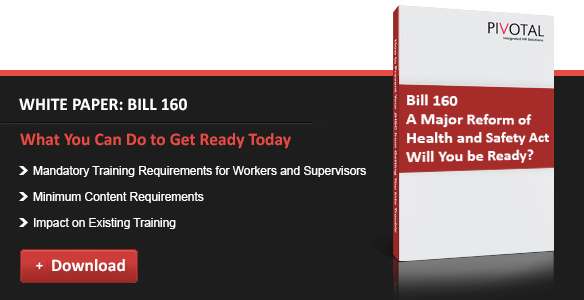I Don’t Want My Temp Workers Killed
There are many good reasons to want to avoid workplace accidents. Among the potential costs to a business:
[listdot]
- Production downtime or shutdown
- Invasive investigations by MOL/WSIB
- Re-hiring/Re-training costs
- Increased WSIB premiums and/or NEER surcharges
- Fines and penalties including criminal offences
- Harm to a business reputation/brand
[/listdot]
The most tragic of all – the death of workers.
Ontario Ministry of Labour (MOL) regulations exist to prevent any of these outcomes. But over and above the regulatory penalties, these other potential costs of workplace accidents make clear how critical it is for any business to be committed to workplace health and safety.
What Non-Compliance Can Lead to
The investigative outcome of the Christmas Eve 2009 scaffold collapse tragedy is a recent example of a worst-case scenario that can befall a business when regulatory compliance gaps are allowed to persist.
Four men died that day, and several more were seriously injured when the swing-stage being used by a work crew for balcony repairs on a high-rise apartment building in Toronto was overloaded with more than its rated occupancy and snapped in two, plunging the seven occupants to the ground. To make matters worse, there were fall-arrest safety harnesses provided for only two occupants, with only one of them actually being used.
Is This Compliance Gap Evident at Your Company?
Among the short-comings identified in the MOL investigation was a lack of supervisor and employee training.
Companies under the Occupational Health and Safety Act (OHSA) section 25 have a responsibility to ensure the equipment provided by the employer is in good condition 1(b), and they must also appoint a competent supervisor, as well as train all workers 2(c).
Training Best Practices
It is not enough to just train workers, the information must be given in a manner that they can understand and retain. For example:
[listdot]
- if they do not read, and the training is delivered online, or if it is presented in a language they do not understand, the training is useless
- showing someone how to do something (e.g.; how to hook onto a fall arrest lifeline) is far more effective than just telling them how to do it
- do not assume everyone “should know” and is thoroughly familiar with the subject matter of the training – always presume each worker has zero knowledge
- regular re-exposure to the training may be necessary to ensure workers do not forget
To ensure compliance:
[listdot]
- application of the training subject matter must be monitored and enforced
- health and safety infractions must be recorded
- retraining must be scheduled if needed
PROOF of Training is Also a Must
Should an accident ever occur, a company would be required to produce accurate and complete records of the training it has provided. This is the essential evidence a company will need to prove that training did in fact occur, and what exactly workers and their supervisors had been trained on.
Training records at a minimum should detail:
[listdot]
- Date of Training
- Trainer name
- Topics discussed with ample detail
- Signatures of those attending the training
Regulatory Penalties that Can Easily Be Avoided
If there is a workplace injury, failure to have provided training and/or be able to provide proof of training can be expensive. Section 66 of the OHSA states company personnel (from Supervisors all the way up to the owner) can all personally be fined of up to $25,000 per offence, and that corporations could face charges of up to $500,000 per offence.
In the Metron scaffold collapse case, the firm’s owner was given four fines of $22,500 each, plus a victim surcharge of $22,500, while the company was charged $200,000, plus a victim surcharge of $30,000 for criminal negligence causing death. These fines totaled $342,500.
All of this could have been potentially avoided if proper training and compliance had been in place.
What to Expect from a Temp Staffing Agency
Temporary staffing agencies are responsible for paying the WSIB premiums of the workers they provide. Thus, temp staffing agencies have a vested interest in ensuring the workplaces to which they are sending workers are health and safety compliant. For their clients they can:
[listdot]
- Provide health and safety compliance audits
- Point to appropriate training resources
- Help establish proper compliance protocols and administration
As a last resort temp staffing agencies can choose to not provide workers and turn down business with firms they identify as having high risk factors for workplace accident due to non-compliance. The reason for this simply stated in the words of one full service agency principal, “I don’t want my temps killed!”

